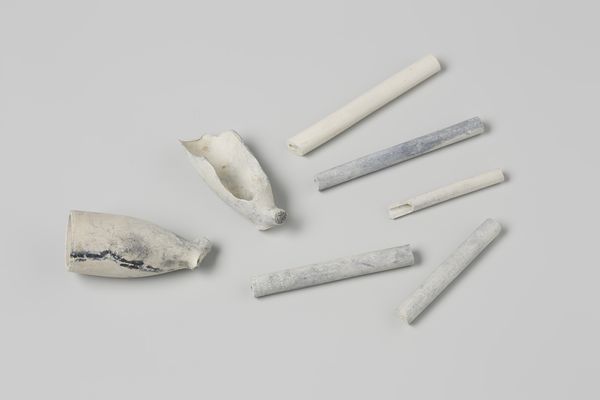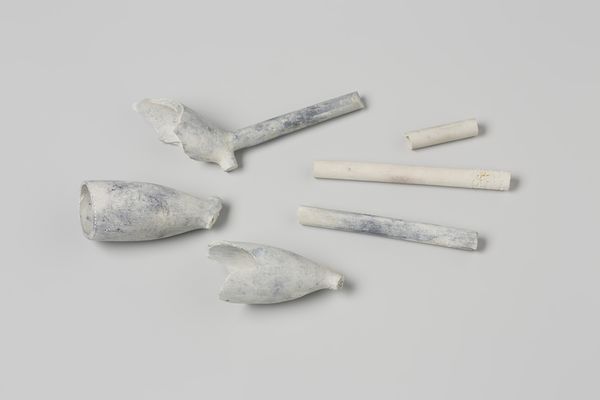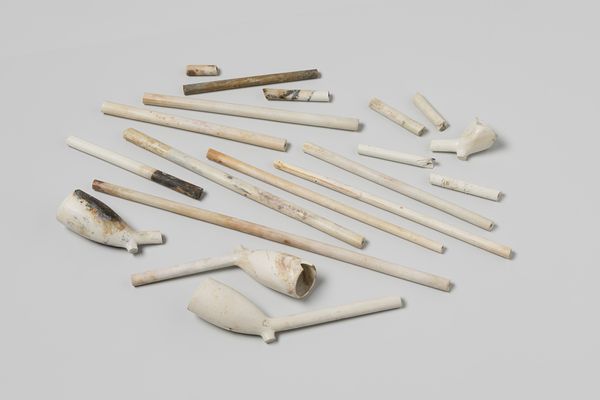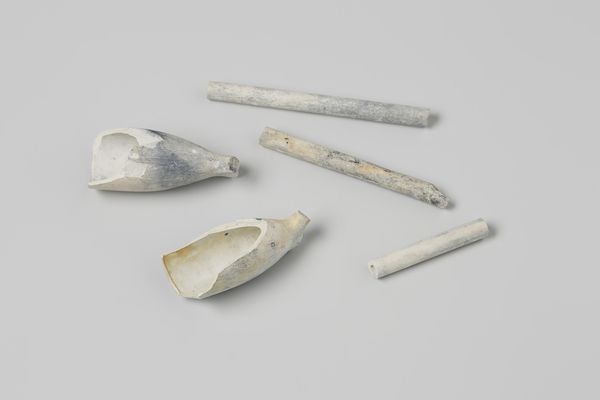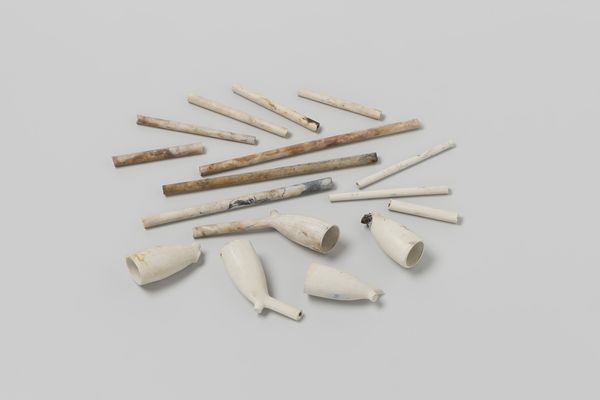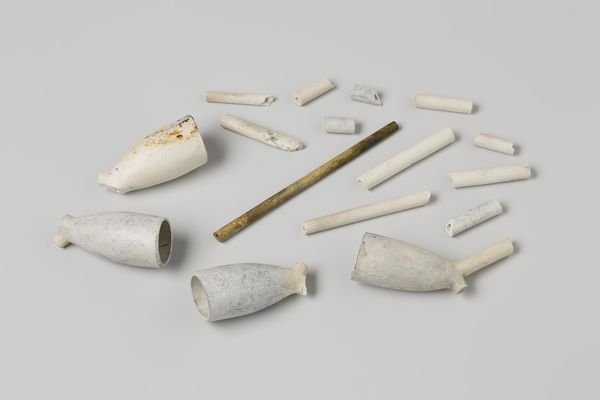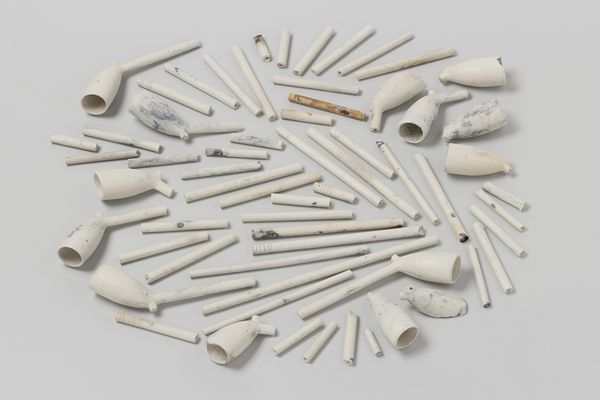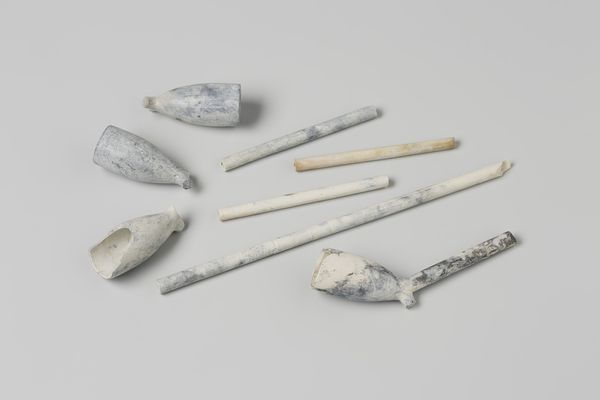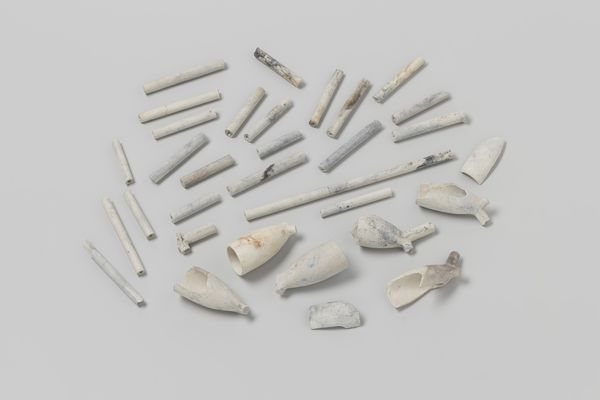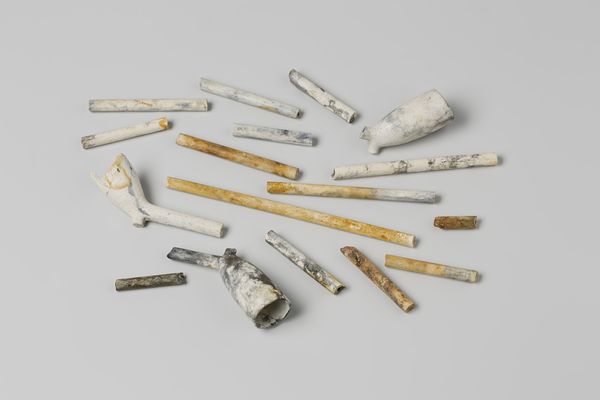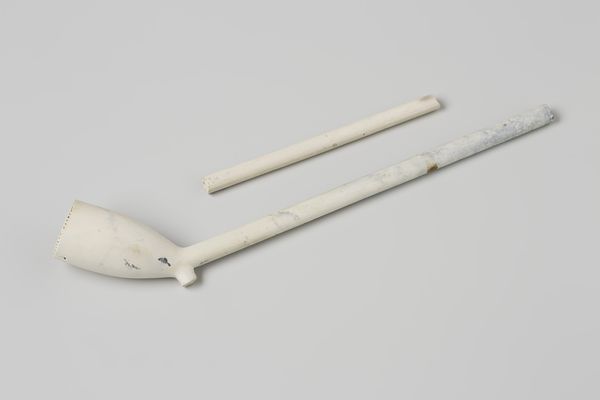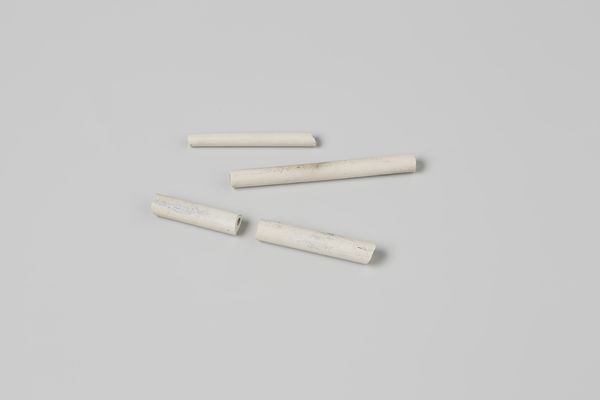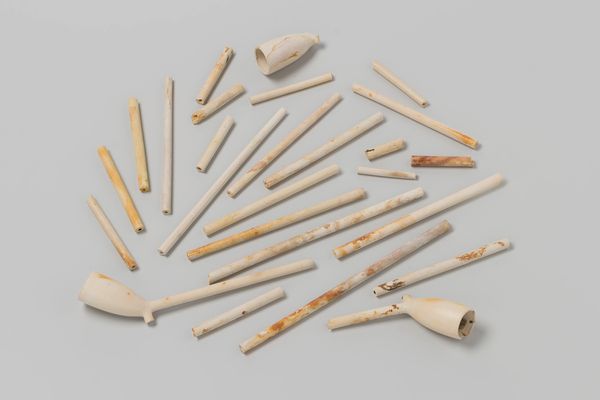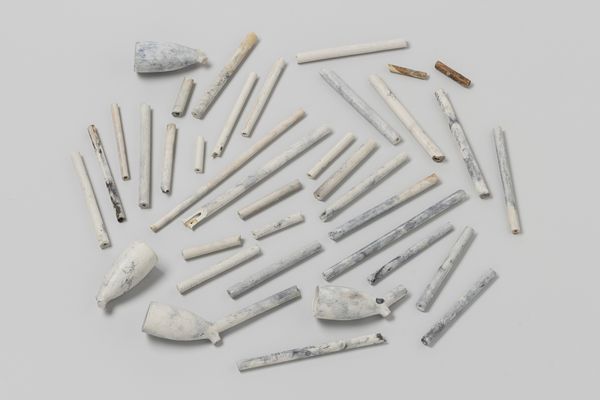
Fragment van pijpenkoppen en pijpenstelen uit het wrak van de Oost-Indiëvaarder 't Vliegend Hart Possibly 1700 - 1735
0:00
0:00
ceramic, found-object
#
medieval
#
dutch-golden-age
#
ceramic
#
found-object
Dimensions: length 9.4 cm, width 2 cm, depth 4.3 cm, length 6.3 cm, diameter 0.6 cm
Copyright: Rijks Museum: Open Domain
These are fragments of pipe bowls and stems recovered from the wreckage of the Dutch East Indiaman 't Vliegend Hart.' The anonymous maker known as WS crafted them from clay. Consider the stark arrangement of these fractured forms. The monochrome palette, punctuated by traces of wear, creates a sense of archaeological stillness. These aren't mere functional objects; they’re material remnants that provoke questions about structure, form, and decay. The pipes’ broken geometry and composition invite us to contemplate the relationship between form and function. A semiotic reading might see the pipes as signifiers of leisure, commerce, and colonial exchange. Their fragmented condition challenges a complete or fixed understanding. These relics prompt contemplation of how objects carry meanings and how such meanings erode or transform through time and circumstance. Ultimately, the pipes exemplify how simple forms can transcend their original purpose, becoming powerful carriers of historical and cultural narratives. They remind us that meaning is not inherent but constructed through our interaction with the material world.
Comments
No comments
Be the first to comment and join the conversation on the ultimate creative platform.
